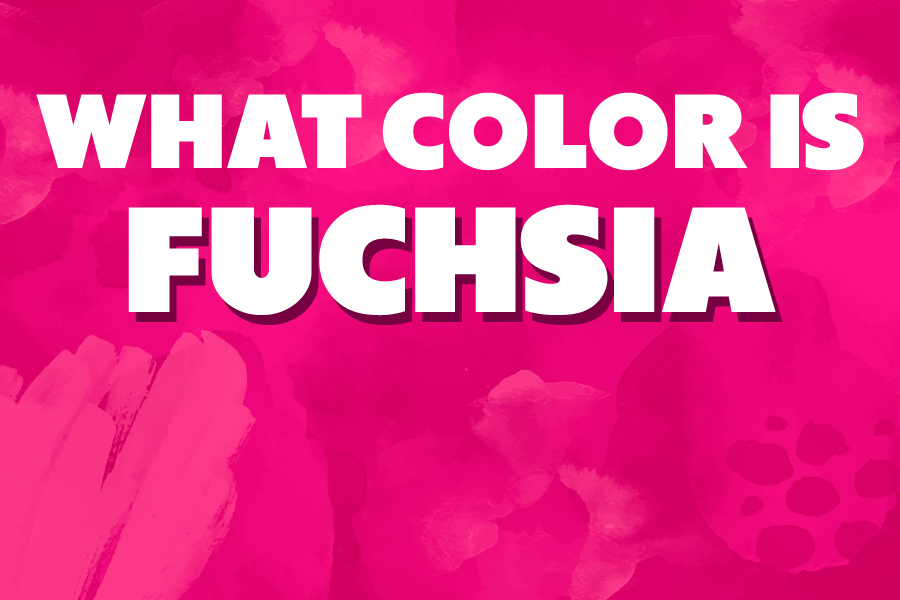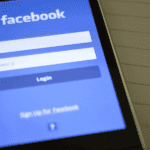Fuchsia is a vibrant and unique color that combines the brightness of pink with the depth of purple. This color is well-known for its boldness and is commonly used in fields such as art, fashion, and design.
If pink feels too bright and purple seems too flashy for your design, fuchsia is a great option. It offers a more balanced choice between pink and purple.
Whether you are new to fuchsia or only know a little about it, don’t worry. This article will cover everything you need to know about this color.
What Color Is Fuchsia?
Fuchsia is a warm, bold color that combines purple and pink tones. It is frequently called fuchsia purple or fuchsia pink, which sits between these colors on the color wheel. While it is sometimes mistaken for hot pink or bright pink, fuchsia stands out with its vibrant energy in both digital and physical designs.
The hex code #FF00FF represents the fuchsia color, a key factor for digital artists and designers. Using this hex code ensures consistency and accuracy in digital designs. This bright and vibrant shade has a distinct identity. Fuchsia adds energy and liveliness to different designs in the digital world or physical spaces.
It is widely used for everything from fashion to website graphics, bringing a creative and bold flair. The balanced combination of purple and pink makes fuchsia a popular choice for anyone who wants to make their work more eye-catching and dynamic.
In art and fashion, fuchsia is recognized as a unique color that conveys happiness, romance, excitement, and success. Fuchsia color is brighter than pink and warmer than purple. Often compared to magenta, fuchsia may look similar, but it has its unique history and characteristics.
Fuchsia vs Magenta: The Differentiation Guide
In some cases, magenta and fuchsia are only different names for one color. In the RGB color system, which people use to project color onto computer screens and TVs, fuchsia and magenta are identical shades. They also share the exact hex code, #FF00FF, on the hex code chart used by web developers and designers.
However, the two colors usually differ slightly in design and print work. Fuchsia generally has a more purple tone, while magenta appears redder. The difference between them can depend on the particular shades being compared and the medium (print vs. digital).
In digital design, magenta and fuchsia might share the same color code, leading to confusion. However, in the CMYK color printing procedure, magenta is used as one of the prominent colors, showing its significance in creating various colors.
History of The Fuchsia Color
Fuchsia, a bright mix of purple and pink, was first introduced as an English name in 1892. The name “fuchsia” originated from a plant. Fuchsia is a shrub or plant with white, pink, or purple flowers. French botanist Charles Plumier named the plant after a sixteenth-century German botanist, Leonhart Fuchs.
This plant is native to South and Central America. In the 17th century, European botanists were fascinated by the vibrant colors of its petals. Since then, fuchsia has become popular in the design and fashion industry for its bold and striking appearance.
Interestingly, a similar color name appeared a few decades earlier. In 1859, a French chemist patented a dye known as “fuchsine.” Less than one year later, it was renamed “Magenta” to celebrate the French army’s victory in Italy at the Battle of Magenta.
It is thought that “fuchsine” was probably very difficult for consumers to pronounce, so the dye sold better after it was renamed “magenta.” In 2001, a softer shade of fuchsia, known as “fuchsia rose,” was selected as Pantone’s Color of the Year.
What Does The Fuchsia Color Symbolize?
Fuchsia’s bold and bright look is uplifting and energizing. It is often seen as a provocative and fun color. Because it’s similar to pink, fuchsia is also generally considered feminine. However, it feels more mature and confident compared to hues such as baby pink or pastel pink.
Many brands aimed at women use fuchsia to express attitude. For instance, the television show Sex and the City, the female-focussed magazine Cosmopolitan, and the women’s fashion brand Betsey Johnson all feature fuchsia color in their logos.
In addition, the famous toy brand Barbie and the fashion brand Victoria’s Secret use fuchsia. They do this to represent women’s power, fun, and fashion. Other brands, such as the beauty brand Glossier and the athletic wear brand Lululemon Athletica, also use fuchsia. They choose this shade to represent youth, energy, and style.
In color psychology, fuchsia is thought to inspire assertiveness and confidence. Fuchsia evokes a sense of self-assurance, maturity, and confidence in the mind.
Its warm red tones offer comfort and nurture, making it a popular choice for Valentine’s Day and other romantic occasions. Furthermore, fuchsia symbolizes uniqueness and independence, standing out boldly no matter what other shades it is combined with.
Different Shades of Fuchsia
Fuchsia comes in different shades, each with its unique traits. Let’s check them out:
Fuchsia Purple
The hex code of Fuchsia purple is #CC397B. Since it’s not a standard web color, you can only use it in CSS and HTML code by its HSB, hex, CMYK, or RGB values. This color is a more muted and darker version of fuchsia, combining purple and pink tones. It adds depth to color schemes, especially in wall paint or textiles.
Antique Fuchsia
Antique fuchsia is a soft, vintage pink color with tinges of purple. It brings to mind old-world charm and is perfect for adding a nostalgic and elegant feel to a room, especially in vintage or antique decor.
The hex code of this color is #915C83. Its RGB values are (145, 92, 131), meaning it’s made up of 36% blue, 39% red, and 25% green. Interior designers often use this color in the Plochere color system.
Festival Fuchsia
Festival Fuchsia is a bold, lively pink-purple color that will bring your mind to celebrations and festive events. It’s perfect for rooms with an energetic and festive vibe, such as vibrant living areas or party spaces. Festival Fuchsia has the hex code #9E2C6A.
Deep Fuchsia
Deep fuchsia is a rich, saturated pink-purple color. It is perfect for creating an atmosphere of depth and richness, especially in more sophisticated spaces. The hex code for Deep Fuchsia is #C154C1. Its RGB values are (193, 84, 193), meaning it’s made up of 41% blue, 41% red, and 18% green.
Deep fuchsia is known as fuchsia in the Crayola crayon colors List. Since it isn’t a standard web color, you can only use it in CSS and HTML by specifying its hex, HSB, RGB, or CMYK values.
Fuchsia Pink
Fuchsia Pink is a more vibrant and lighter variation of classic fuchsia, giving off a feminine and playful vibe. It is excellent for adding a whimsical, cheerful touch to a room or for use in clothing and accessories. This color has the hex code #FF77FF.
French Fuchsia
The hex code of French Fuchsia is #FD3F92, with RGB values of (253, 63, 146). It means it’s made up of 32% blue, 55% red, and 14% green. It’s a shade of fuchsia color that is famous in France.
French fuchsia is a deep, rich pink color that has a hint of purple, giving it an elegant and romantic feel. It’s perfect as an accent in the fashion industry or for adding sophistication to a space.
Fuchsia Rose
Fuchsia Rose is a rosy shade of fuchsia, blending rose’s softness with fuchsia’s boldness. It’s ideal for floral-themed decor or adding a feminine touch to fashion items. The hex code for Fuchsia Rose is #C74375. You can only use this color in CSS and HTML code by specifying its hex, HSB, RGB, or CMYK values.
What Colors Pair Well With Fuchsia?
Fuchsia is a bright and bold color that works well with various other shades, each adding style to the mix. These combinations can change a design’s overall feel and look, making the fuchsia color a versatile option for different creative projects. Colors that go well with fuchsia are:
Fuchsia and Tangerine: This pairing is bold and fearless. Tangerine, a bright orange, pairs with fuchsia to produce a lively and energetic palette. It is ideal for designs that want to capture attention and inspire excitement.
Fuchsia and Black: Black enhances fuchsia’s depth and sophistication. This combination is common in luxurious or formal designs, adding elegance and a serious tone. It is perfect for creating a bold contrast that draws attention while keeping a polished look.
Fuchsia and Gold: This pairing brings a touch of luxury and warmth to the fuchsia color. Combining fuchsia and gold enhances the palette with a rich, festive vibe that beautifully complements fuchsia.
Fuchsia and Lime Green: This pairing is vibrant and full of energy. Lime green, as fuchsia’s complementary color on the color chart, creates an energetic and striking effect. It is perfect for designers who want to create energetic, bold, and lively designs.
Fuchsia and Mint: Mint provides a refreshing and excellent contrast to the boldness of fuchsia. This combination gives a modern and stylish feel, perfect for designs that combine subtlety with vibrancy. It is ideal for spaces that need a touch of elegance without being too overwhelming.
Conclusion
So, what color is fuchsia? Fuchsia is a striking and bright color that mixes the richness of purple with the vibrant energy of pink. It comes in various variations and shades, like fuchsia purple, french fuchsia, and deep fuchsia.
Besides, fuchsia can express many emotions. It’s youthful, joyful, and uplifting but can also symbolize arrogance. Using fuchsia in your designs can strategically boost your business presence and brand. This guide has shown you how to easily include fuchsia colors in your designs.



